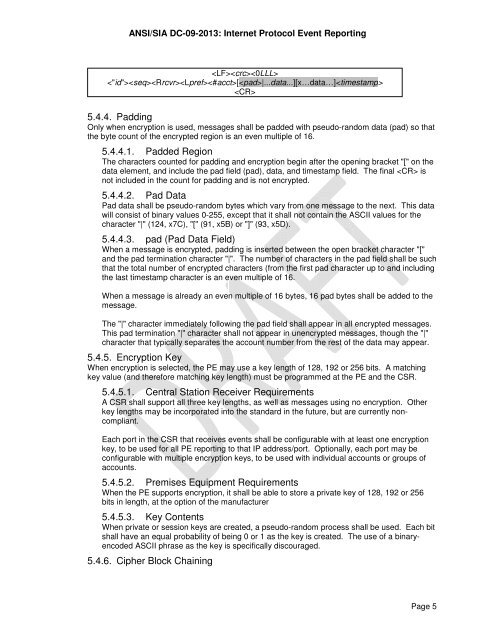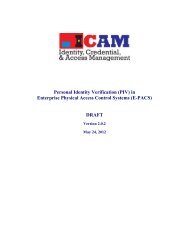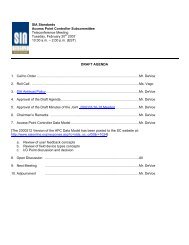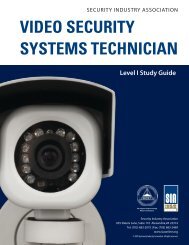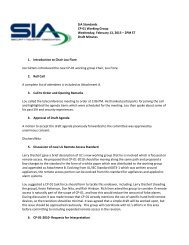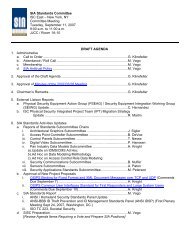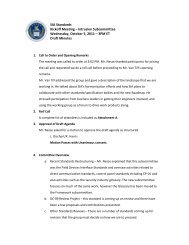DC-09 Preparing for ANSI Public Review - Security Industry ...
DC-09 Preparing for ANSI Public Review - Security Industry ...
DC-09 Preparing for ANSI Public Review - Security Industry ...
- No tags were found...
You also want an ePaper? Increase the reach of your titles
YUMPU automatically turns print PDFs into web optimized ePapers that Google loves.
<strong>ANSI</strong>/SIA <strong>DC</strong>-<strong>09</strong>-2013: Internet Protocol Event Reporting[|...data...][x…data…]5.4.4. PaddingOnly when encryption is used, messages shall be padded with pseudo-random data (pad) so thatthe byte count of the encrypted region is an even multiple of 16.5.4.4.1. Padded RegionThe characters counted <strong>for</strong> padding and encryption begin after the opening bracket "[" on thedata element, and include the pad field (pad), data, and timestamp field. The final isnot included in the count <strong>for</strong> padding and is not encrypted.5.4.4.2. Pad DataPad data shall be pseudo-random bytes which vary from one message to the next. This datawill consist of binary values 0-255, except that it shall not contain the ASCII values <strong>for</strong> thecharacter "|" (124, x7C), "[" (91, x5B) or "]" (93, x5D).5.4.4.3. pad (Pad Data Field)When a message is encrypted, padding is inserted between the open bracket character "["and the pad termination character "|". The number of characters in the pad field shall be suchthat the total number of encrypted characters (from the first pad character up to and includingthe last timestamp character is an even multiple of 16.When a message is already an even multiple of 16 bytes, 16 pad bytes shall be added to themessage.The "|" character immediately following the pad field shall appear in all encrypted messages.This pad termination "|" character shall not appear in unencrypted messages, though the "|"character that typically separates the account number from the rest of the data may appear.5.4.5. Encryption KeyWhen encryption is selected, the PE may use a key length of 128, 192 or 256 bits. A matchingkey value (and there<strong>for</strong>e matching key length) must be programmed at the PE and the CSR.5.4.5.1. Central Station Receiver RequirementsA CSR shall support all three key lengths, as well as messages using no encryption. Otherkey lengths may be incorporated into the standard in the future, but are currently noncompliant.Each port in the CSR that receives events shall be configurable with at least one encryptionkey, to be used <strong>for</strong> all PE reporting to that IP address/port. Optionally, each port may beconfigurable with multiple encryption keys, to be used with individual accounts or groups ofaccounts.5.4.5.2. Premises Equipment RequirementsWhen the PE supports encryption, it shall be able to store a private key of 128, 192 or 256bits in length, at the option of the manufacturer5.4.5.3. Key ContentsWhen private or session keys are created, a pseudo-random process shall be used. Each bitshall have an equal probability of being 0 or 1 as the key is created. The use of a binaryencodedASCII phrase as the key is specifically discouraged.5.4.6. Cipher Block ChainingPage 5


